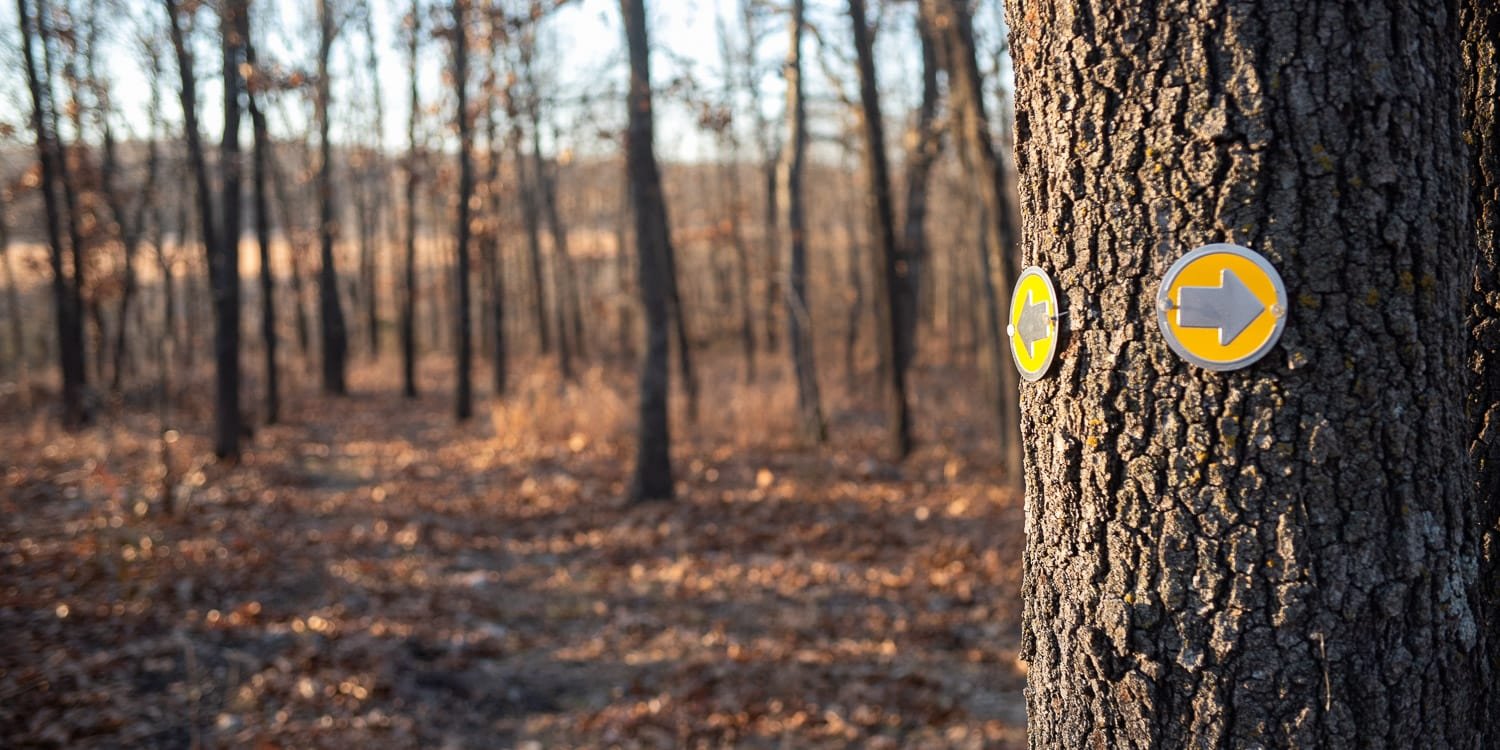
Arrows on a tree let hikers know where the loop starts and that they they can go either way.
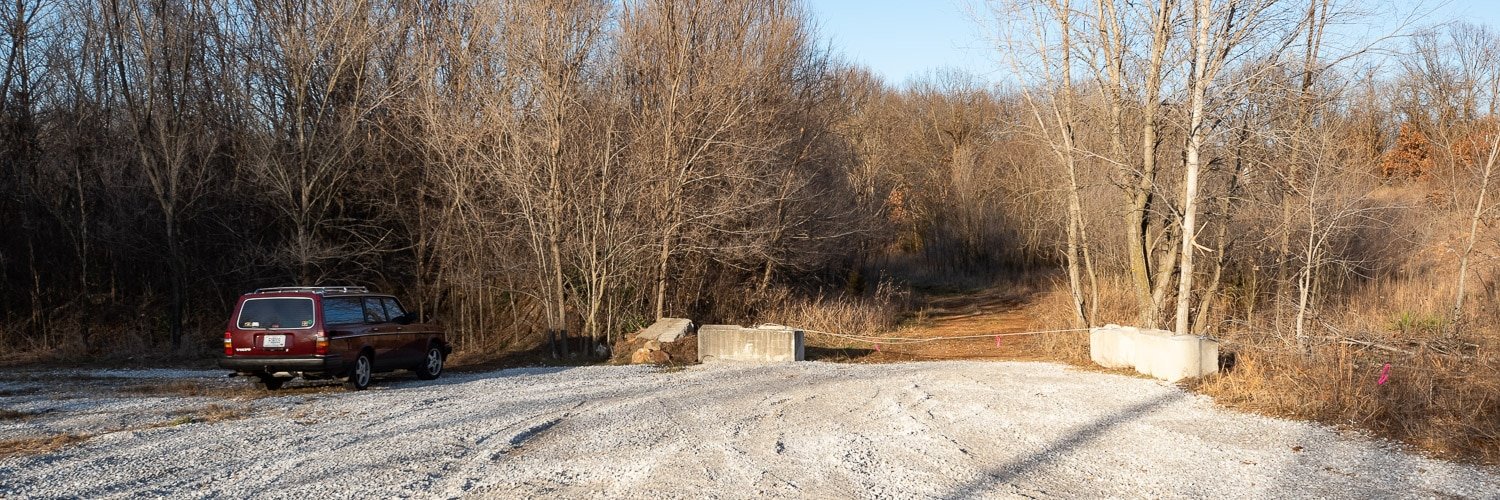
The trailhead is on Sharon Drive, just west of the railroad tracks and Carterville.
First trail in Cardinal Valley Habitat is now open for public use
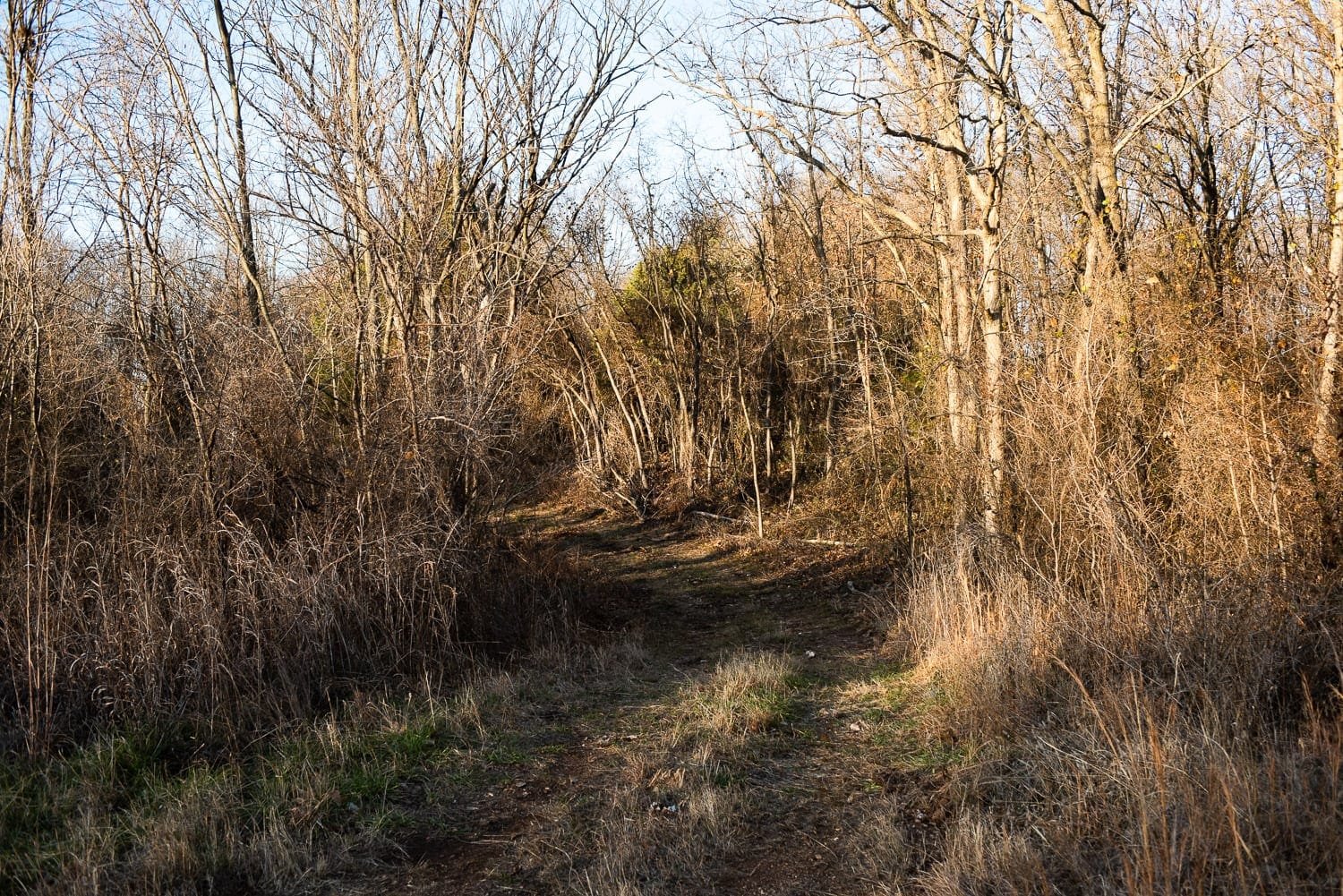
Habitat director Randy Haas took advantage of an existing path through the wooded area at the start of the trail.
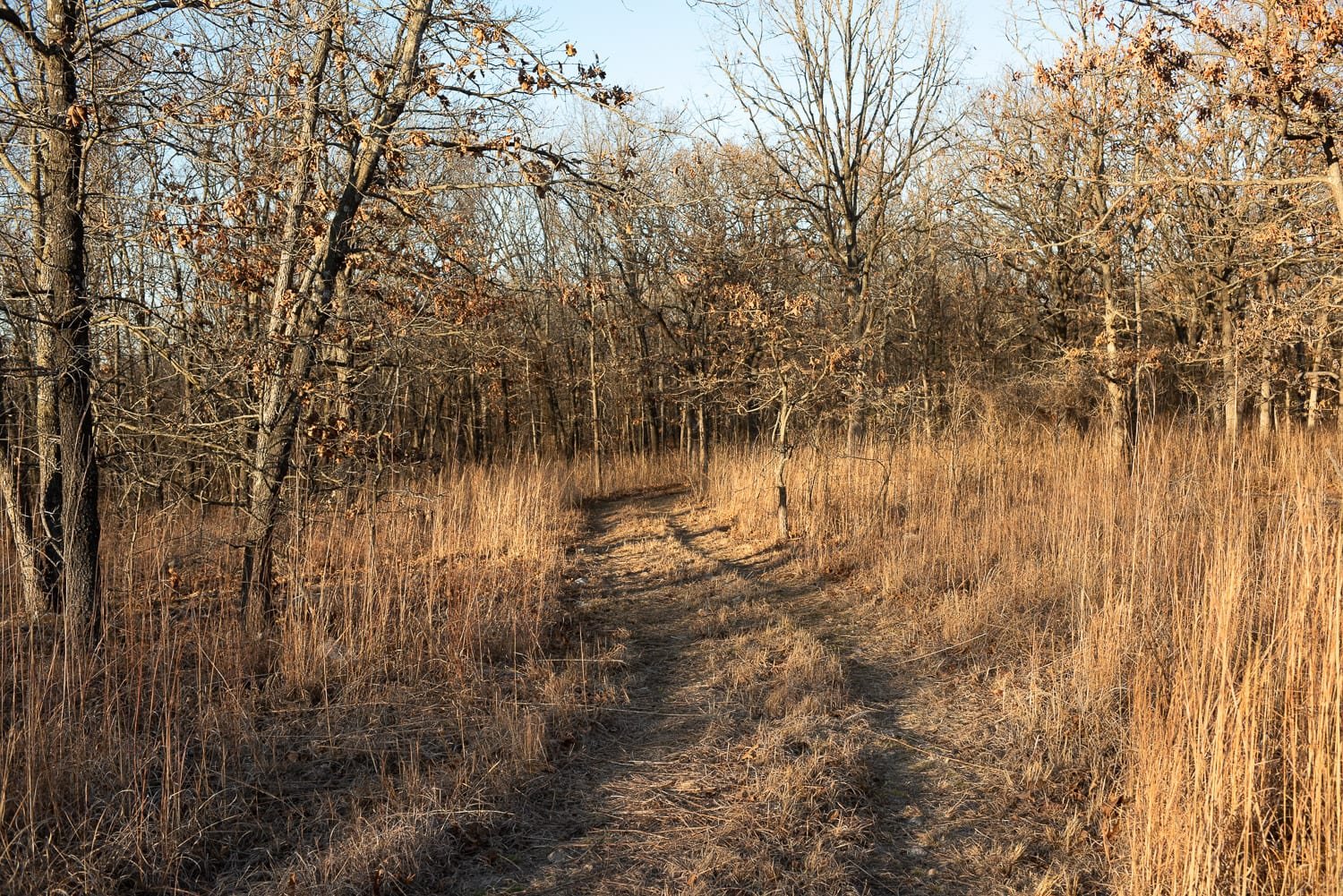
A small prairie is an indication that cattle may have grazed there at one time.
The first trail in the Cardinal Valley Habitat is now ready for hikers.
Randy Haas, habitat director, announced this week that the trail is open to the public.
The trail is in a wooded area on the northeast edge of Webb City (which is part of a large swath Webb City-owned property that was recently annexed/deannexed by Webb City/Carterville).
Get there by finding the trail head on Sharon Drive just west of the railroad tracks and Carterville City Limits. (It’s east of the Carterville lift station.)
You’ll know you’re there when you see a small gravel parking lot with concrete blacks and cable keeping motor vehicles off the trail.
Haas said he plans to improve the trail but wanted people to be able to use it as soon as possible.
The total length of the trail is about 1 1/3 miles. There’s a 1/3 mile straight stretch that leads to a 2/3-mile loop. On the east are the railroad tracks and Sunshine Estates subdivision.
Across the field to the west is the Sky Kings R/C Club air field. That area used to be an old Webb City lagoon that discharged (and illegally leaked) into Center Creek. It was filled in with mine waste and covered with soil by the EPA.

Randy Haas provides this map of the trail.
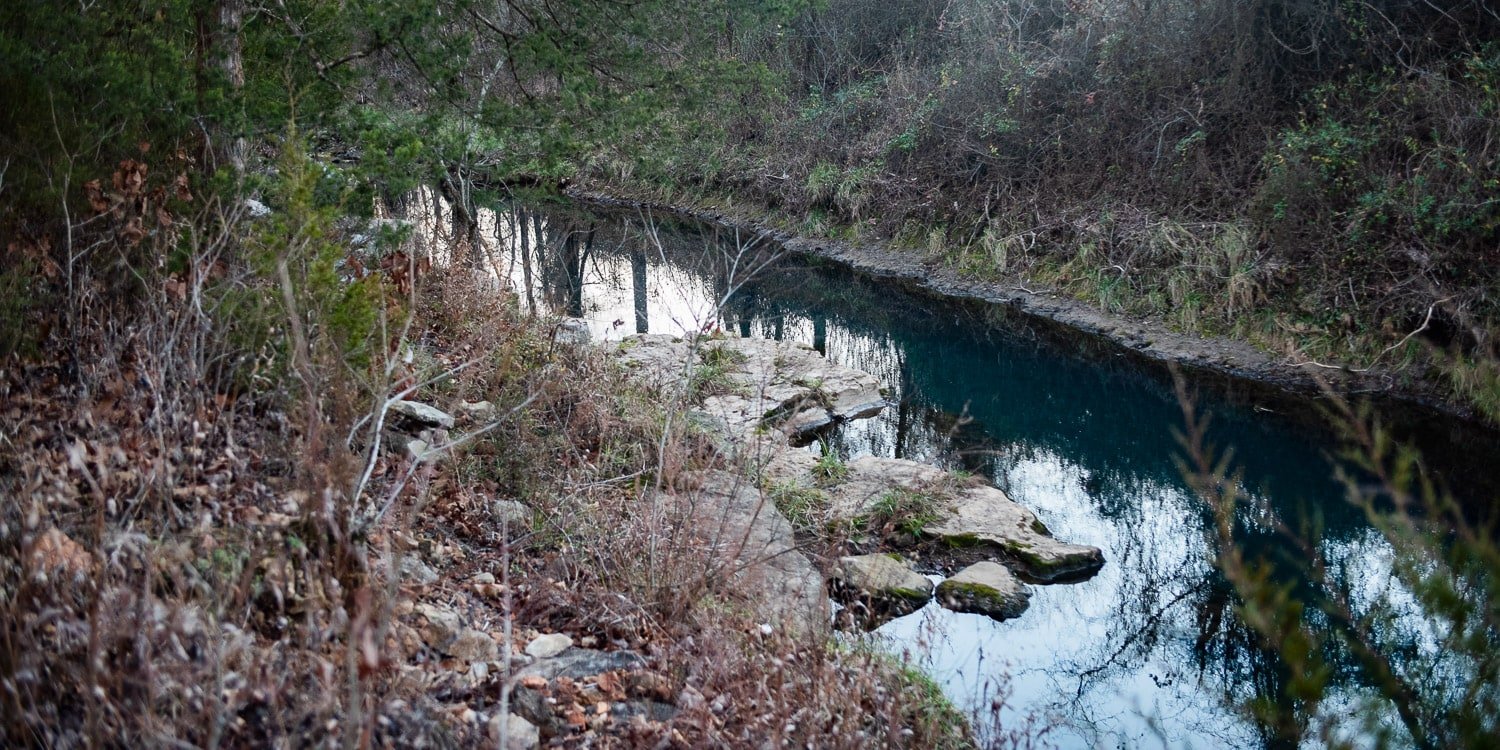
Ben’s Branch will be more visible from the trail loop during the winter when the leaves are off the trees.
During winter besides getting some exercise, Haas says to enjoy watching the birds and maybe seeing some wildlife, such as a wild turkey. There’s also a nice view of Ben’s Branch, which will be harder to see when there are leaves on the trees.
There’s a little prairie with tall grass, where he says he found fencing and remnants of a barn to indicate cattle may have fed there at one time.
He has found a formation of stone without an apparent purpose.
In the spring, wild flowers and native plants will be sprouting.
The whole idea of the Cardinal Valley Habitat, and Haas’ mission, is to restore the land, formerly dominated by mine waste, to its native state.
Haas took advantage of an existing trail entering the wooded area and mostly created the loop. On Tuesday, he was blowing leaves away to make it easier to follow the trail. On the loop especially, sturdy shoes are recommended because of large rocks. (Don’t expect a fine-pebble surface like the Frisco Greenway Trail.)
Haas says he hopes there will be more trails in the habitat. He welcomes questions and comments. Just leave a message for him to return your call at (417) 529-1533.

Randy Haas is wondering what this man-made feature along the trail could have been?
The Webb City Sentinel isn’t a newspaper – but it used to be, serving Webb City, Missouri, in print from 1879-2020. This “newspaper” seeks to carry on that tradition as a nonprofit corporation.
© All Rights Reserved 2025
DIY website design by Bob Foos